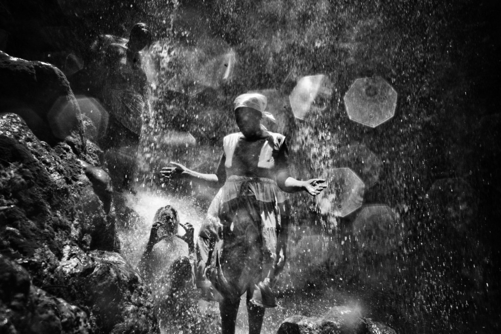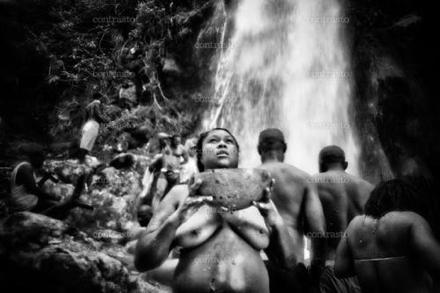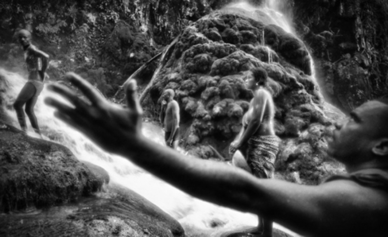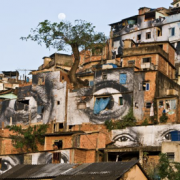Emiliano Larizza: Aesthetical photo journalism in humanitarian settings
by Nicola Popovic
“Say: ‘peace’!”
Pictures are part of Emiliano Larizza’s work that won the World Press Photo contest in 2012
© Emiliano Larizza, 2011.
An art exhibition of pictures taken in humanitarian settings always moves us, leaves us thinking about what we can do, what we have done, how we live and maybe even leaves a bad taste in one’s mouth. I wonder what the pictures have changed in the person’s life they portray. Images are powerful. They have moved people, changed their mind, influenced political decisions and even have a say over investments in development cooperation and humanitarian aid. Unfortunately, mass media often uses an emotive and polarizing discourse which influences the visual representation of the already established.
How do we portray people in need? In what context are these photos taken? How are they used and how do they change what we see and do? I asked Emiliano Larizza who has traveled different continents, worked for the United Nations and various news agencies and newspapers. In 2012, he won the World Press Picture for his work in Haiti. He wants people to see things happening somewhere else. He wants people to see new things from a new point of view. He compares his work to a binocular that can help to widen the perspective on a specific aspect of a situation.
“Photography allows you to see an image and an imagine that lies beyond. Especially when we talk about a photo-story where the photographer intends to develop a discourse, which has a detailed perspective on a certain issue. Working in Haiti, after the earthquake, meant more than just doing a job. I had to understand different aspects within the Haitian society.”
Telling a story of a country and its people requires a deep understanding of the context and of the different actors on the ground. It also requires socio-cultural sensitivity and the ability to adapt to local living conditions. The photographer may be exposed to a similar limited sanitary situation, lack of food and security as the people on the pictures. Emiliano emphasizes the importance of a careful preparation and the awareness of risk, cultural differences and physical and mental challenges.
Photography is a window that opens on another world through an artist’s eye. Emiliano’s work about Haiti is not portraying the victims and their vulnerabilities in the aftermath of the earthquake but the spiritual celebration in Saut d’Eau, a sacred waterfall in Mirebalais, Haiti. He captures the celebration of life in a deadly context.
© Emiliano Larizza, 2011.
“To take pictures in a humanitarian context can be very emotional. It always depends on the sensibility of the photographer, his capacity to see… and his human qualities. The point of view of the photographer is reflected in his pictures”. Emiliano says – as he remembers the moment he shot the pictures – that he cannot forget the “click” and the faces he was looking at when shooting. He relies on his instincts and can often not rationally explain why and how he took the pictures. But he states that he keeps learning every time. Images can say more than words and are remembered more vividly than speeches or policy papers. Images can build and deconstruct prejudices and stereotypes, change our minds and make us see something new.
@Emiliano Larizza, 2011







Trackbacks & Pingbacks
[…] up on the implications of photojournalism in humanitarian settings, today’s post will look into the Open Society Foundations Moving Walls exhibits. Open Society […]
Comments are closed.